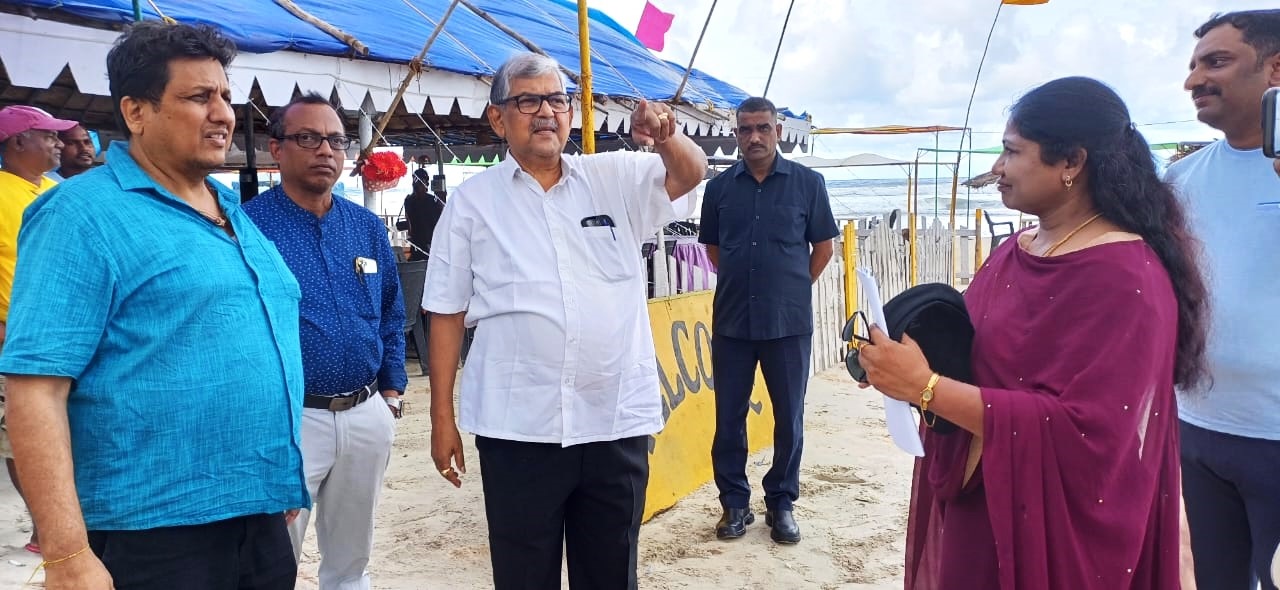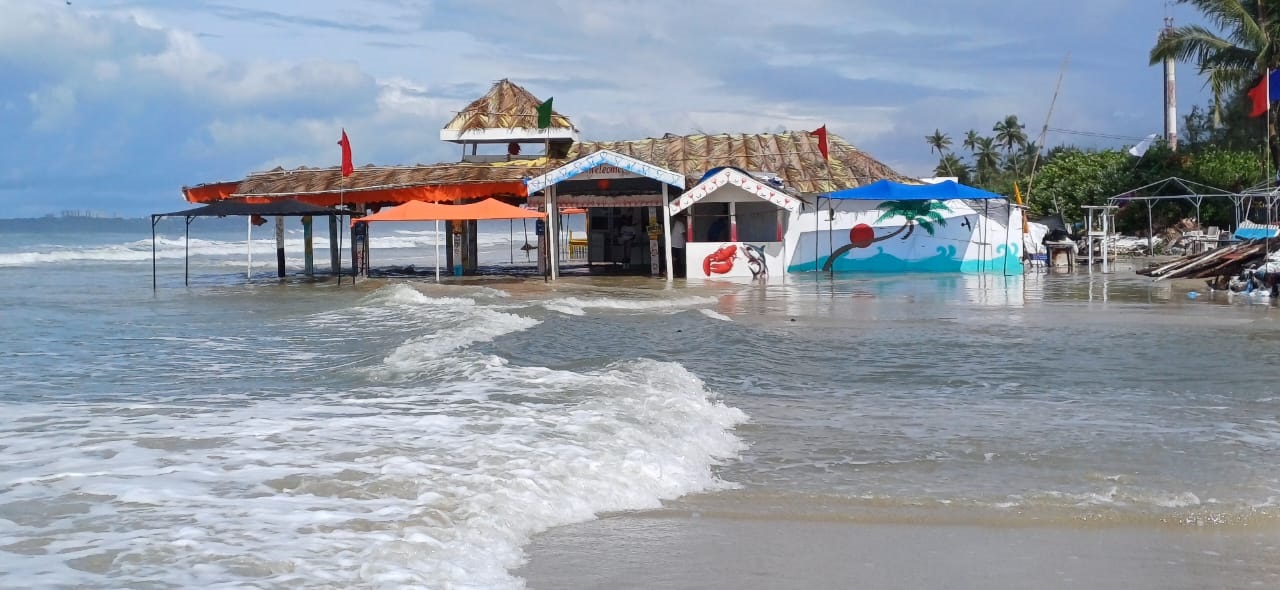NCSCM team begins work at Majorda beach; Dutch scientists to visit State in Nov

Scientists of the National Centre for Sustainable Coastal Management (NCSCM) with Environment Minister Aleixo Sequeira at the Majorda beach.
MARGAO
A five-member team of scientists from the National Centre for Sustainable Coastal Management (NCSCM) on Friday began the shoreline study along the Goa coast hit by soil erosion over the years.
A team from the Netherlands is also visiting the state at the invitation of the Goa government in November to advise the government on sea erosion. The team, which began its work at Majorda beach, hit by rising seawater on Thursday morning, will crisscross the entire coast, including the 60-70 critical areas that have been hit by sea erosion.
Environment Minister Aleixo Sequeira, who accompanied the team to Majorda beach on Friday morning along with Goa Coastal Zone Management Authority (GCZMA) Director Johnson Fernandes and Sanjeev Joglekar, stated that the team has been engaged by the government to conduct a study of the shoreline because certain areas along the beach have witnessed erosion.
“The team has just come to Goa. They have inspected Majorda beach. Let them complete the inspection. They have been on the job for the last several months. They have identified certain critical areas along the coast,” Sequeira said.
The Minister added that officials of the NCSCM have already conducted an aerial survey of the beach stretch and have identified certain critical areas. “They have now come for a field study along the identified areas to study the issues in detail,” he said.
Meanwhile, the Environment Minister informed that the Goa government has sought the services and advice of experts from the Netherlands on how to address the issue of sea erosion. Stating that the experts will be visiting Goa in November, Sequeira said the government has proposed a joint meeting with the NCSCM, experts from the Netherlands, and representatives of other coastal states of India since the shoreline issues are affecting the entire country.
“We will be inviting representatives of the coastal states for the joint meeting so that they also take advantage of the interaction. As one country, we have to jointly resolve the issue of erosion. Issues on sea erosion may vary from state to state, but by and large, the coastline needs to be studied for a solution,” he added.
Native plantations suggested to contain coastal erosion
The NCSCM scientists have pointed out that Goa’s coastal belt has been witnessing both beach accretion and sea erosion and have favoured plantations native to the area as one of the measures to contain sea erosion.
While the team noted that bio-shields, along with plantations, are normally recommended to mitigate sea erosion, Environment Minister Aleixo Sequeira maintained that the team can suggest 2-3 options for the government to evaluate before taking a final decision.
The Environment Minister further asserted that tetrapod measures are not suitable in a tourist state like Goa.
"Goa requires beaches for tourism. If we place tripods or tetrapods on the beach stretch, it will not go well with beach tourism. Let us keep all our options open. Then we can choose the right option,” he said.
The scientists also sought to know whether waves that break deep in the sea have been progressing onto the beach and whether this requires intervention. “If the waves break close to the shore, then we will have to implement some intervention,” remarked a scientist.
They pointed out that the shoreline has been facing sea erosion since the 1990s and that it has progressed over the years. They, however, stated that the situation on the Goa coast is far better regarding structures dotting the coast compared to the ground reality in neighbouring Karnataka.
Alarming rise in seawater levels linked to natural phenomenon
Environment Minister Aleixo Sequeira has attributed the rise in seawater level along the Goa coast to the spring tide, which normally happens three times a year: in July, October, and December.
 A beach shack at Majorda affected by the rise in seawater on Friday. Santosh Mirajkar
A beach shack at Majorda affected by the rise in seawater on Friday. Santosh Mirajkar
The Minister, along with scientists from the NCSCM, descended at Majorda beach, which was most affected by the rise in seawater in the last two days. Saying that the local fishermen and shack owners have attributed the rise in seawater to a natural phenomenon, Sequeira, however, stated that the situation is indeed frightening.
“Locals are used to this phenomenon. Normally, it is attributed to the spring tide, which occurs three times a year in July, October, and December. This time it is a little more alarming, maybe because of the high monsoon this year and the spring tide,” he added.